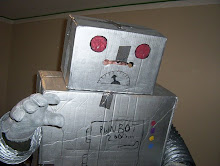So there you have it. I don't regret the horrible pun title as well. If you're interested in buying the book the ISBN is:What are "love apples"?
There are two answers to this one. Firstly: tomatoes. The fruit originated in south America and was introduce to Europeans by the conquistadors in the seventeenth century, but it failed to enthuse European palates. At least until some clever marketer labelled the tomato as an aphrodisiac and started referring to it by the Latin expression poma amoris. But it was when the French got into the game and christened the tomato pomme d'amour that tomato sales in Europe really took off. Maybe that's the origin of our expression "she's a hot tomato." the French were perceived to be great lovers, and if they thought the tomato had special properties, well then, it surely must be the case. Americans apparently either did not hear of this connection orb were just too worried about the safety of tomatoes to be charmed by its aphrodisiac potential. They were convinced that tomatoes, belonging to the same plant family as the belladonna, were poisonous. So Americans did not start eating tomatoes until around 1820, when, according to legend, Robert Gibbon Johnson, in what appeared to many to be a public display of bravery, ate a tomato in front of a crowd in Salem, New Jersey.
Tomatoes of course do not have aphrodisiac properties, but they still do deserve our love. they have pretty interesting health properties. the fruit is rich in lycopene and vitamin C; lycopene has been strongly linked with a reduced risk of prostate and cervical cancer.
Answer number two is that in the Elizabethan Age lovers exchanged "love apple," which really were apples. But specially treated apples. A woman would keep a peeled apple in her armpit until it was saturated with her sweat, and then give it to her sweetheart. And guess what? Modern research has shown that there may be compounds in underarm secretions that have some attractive properties for members of the opposite sex.
978-0-385-66602-2

0 comments:
Post a Comment